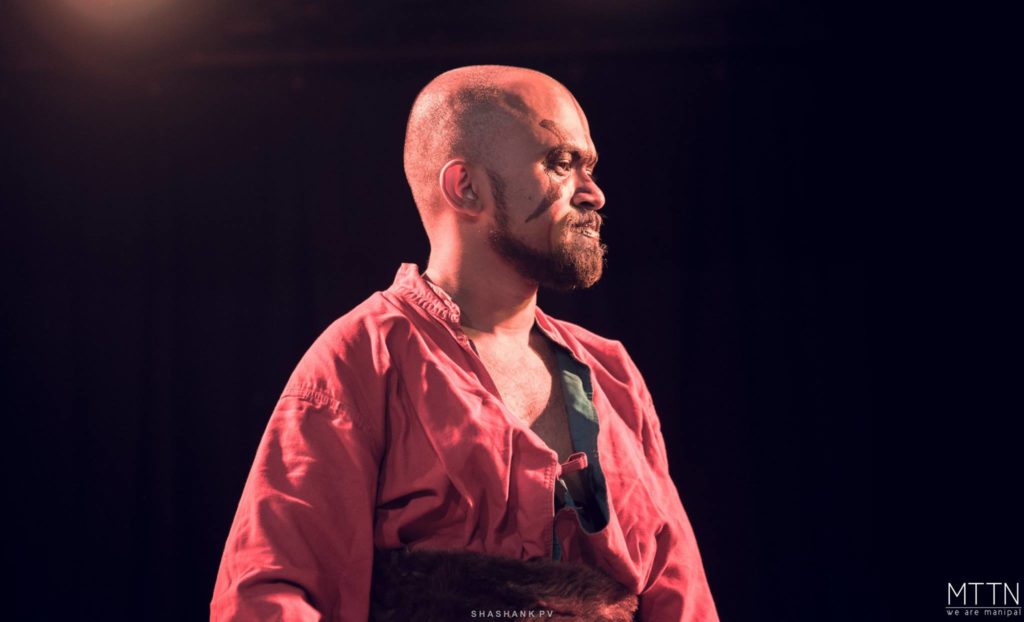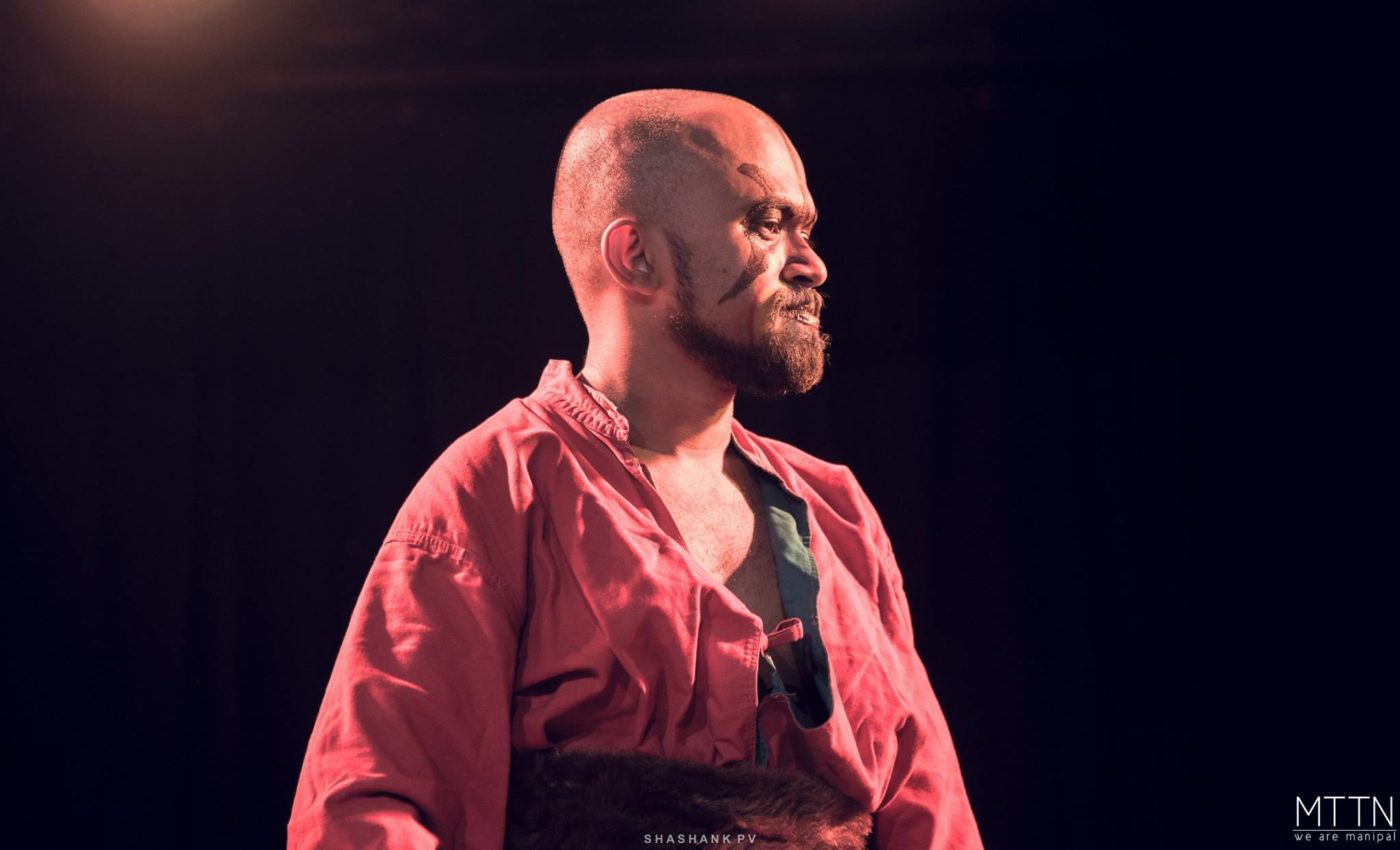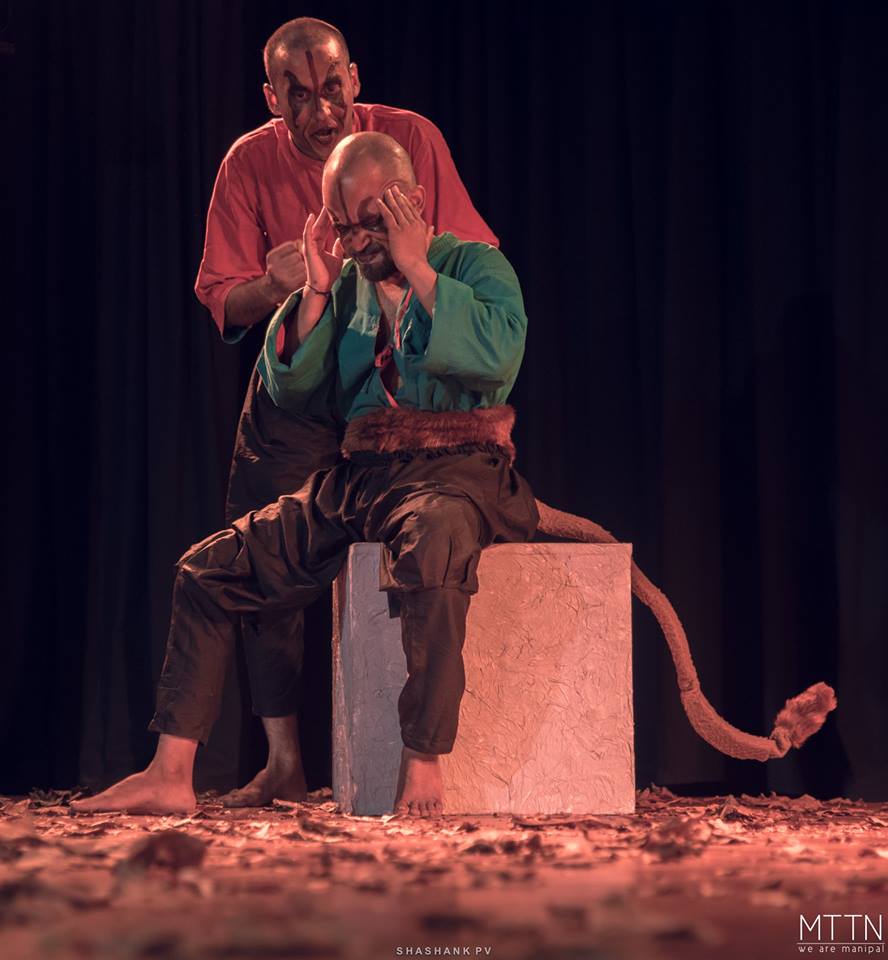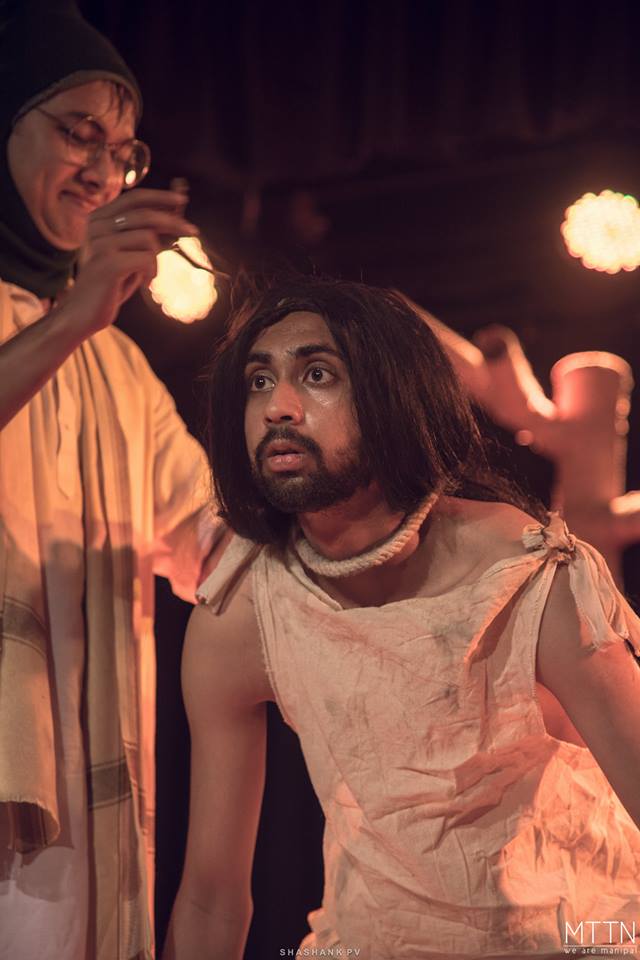
‘Bhagua Ki Prateeksha Me’ is the Indian adaptation of the classic play, ‘Waiting For Godot’ written by Samuel Beckett. It was performed on the 28th of March in TMA Pai auditorium, organized by the Department of European Studies. As the English original has found a place in the course material, the performance was held in an attempt to give students a better understanding of the nuances of the play.
Performed by MIT alum Abhinav Grover and his theatre company, BeTaal, the play is set in a jungle, where two monkeys wait for a man named Bhagua to show up. As they wait, they indulge in banter that keeps them occupied. They meet a man who owns a slave and they are staggered by his mistreatment, in act one. In act two, the slavemaster returns and the two monkeys realize that he has lost his vision. At the end of both the acts, a voice informs the two monkeys that Bhagua will show up the next day. Various themes are explored in an extremely vague plotline that can be interpreted in multiple ways.
Religious:
A bunch of references in the play are taken directly from the Ramayana, mainly the Kishkinda Kand. In fact, it is suggested multiple times that ‘Bhagua’ is actually Lord Ram. This analogy can again have various connotations. First of all, it may point to the billions of people who beg God for better lives to no avail. Then there are people doing everything in their power to attain better afterlives, forgetting in the process, how to be happy on Earth. The announcement that Bhagua will arrive the next day and the harassment of the monkeys right after may refer to the various scams spirituality is surrounded by. From that perspective, the play focuses on the ways in which the idea of God, when misinterpreted, can bring misery to our mortal lives.
Philosophical:
“Hum jee kyun rahein he?”
“Aadat he.”
The play widely revolves around the concept of absurdity. We see Bhopu and Peepee, the two monkeys, portrayed brilliantly by Abhinav Grover and Kaustav Sinha, wait aimlessly for Bhagua who never actually shows up. The play tackles questions on the existence, purpose, and insignificance of men—in this case, the men being monkeys. Bhopu and Peepee indulge in pointless games and conversations so as to kill time. During the course of their conversation, we see the significance of their unconventionally beautiful relationship. We see how they constantly feel they would be better off without each other but at the same time, survive off each other’s company. We see how both the characters count solely on the hope that someday Bhagua will show up and will rid them of their misery. The possibility of hope that leads to nowhere gives shape to humour as well as tragedy.
Socio-Political:
As the monkeys wait for Bhagua, we see Sarkar and Lullu—played by Kartavya Sharma and Karanjot Saini—make a brief but impactful entry into Bhopu and Peepee’s otherwise uneventful lives. Their characters can be interpreted as the relationship between man and government or man and technology where man is enslaved by both. The enslaved man, Lullu when unshackled, goes on a vehement rant expressing how he has been oppressed by different people and things all these years. Eventually, when the words get too painful, Hariya manages to silence Lullu, enslaving him once again.
The play’s alternative title—‘Ramji Aayenge’—might be a wordplay on Modi’s ‘Acche Din Aayenge’. The way Hariya treats the two monkeys can be interpreted as a commentary on discrimination and it’s horrendous stupidity.
Overall, the play was successful in grabbing the audience’s attention in every way possible. With amazing performances throughout, nothing more could have been asked from the actors. Abhinav Grover has successfully adapted the English classic into an extremely comprehensible Hindi version. The play’s abstract sequences though may seem too overwhelming to an average joe not interested in philosophy. Very relevant to the Indian context, the play has a lot going for it, but for someone unfamiliar with its source material, it might seem rather bland.
~Written by Chintan Gandhi and Riya Peter for MTTN
~Photographs by Shashank PV



Leave a Reply
You must be logged in to post a comment.